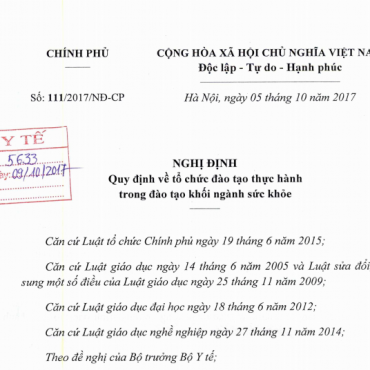Contact Admission
International Collaboration
Asymptomatic and Symptomatic SARS-CoV-2 Infections After BNT162b2 Vaccination in a Routinely Screened Workforce
Asymptomatic and Symptomatic SARS-CoV-2 Infections After BNT162b2 Vaccination in a Routinely Screened Workforce
Li Tang, PhD1; Diego R. Hijano, MD, MSc2; Aditya H. Gaur, MD, MBBS2; et alTerrence L. Geiger, MD, PhD3; Ellis J. Neufeld, MD, PhD4; James M. Hoffman, PharmD, MS5; Randall T. Hayden, MD3
JAMA. Published online May 6, 2021. doi:10.1001/jama.2021.6564
A 2-dose regimen of the BNT162b2 vaccine (Pfizer-BioNTech) against SARS-CoV-2 was authorized in December 2020 based on reported 94.8% efficacy.1 Although an association between vaccination and a reduction in symptomatic disease has been well described, an association with asymptomatic infection remains unclear.2,3
Methods
In March 2020, St Jude Children’s Research Hospital initiated routine, test-based screening of asymptomatic workers and targeted testing for symptomatic individuals and those with known exposure. Polymerase chain reaction–based testing of midturbinate samples from asymptomatic employees was performed at least weekly. On December 17, 2020, vaccination with BNT162b2 was initiated. “Vaccine-eligible” workers were individuals meeting state vaccination guidelines.4 Vaccinated employees receiving BNT162b2 were followed up from their first dose date. Unvaccinated employees were followed up from December 17, 2020, or their first asymptomatic screen result, whichever was later. The end of surveillance was March 20, 2021, employment termination, a positive test result, or receipt of other vaccines, whichever was earlier. No person contributed to both groups. Individuals with prior COVID-19 exposure were excluded. When asymptomatic infections were analyzed, symptomatic and known exposure cases were treated as competing risks; when symptomatic infections were analyzed, positive results from asymptomatic screening were treated as competing risks.
The incidence rate ratio (IRR), the ratio of confirmed COVID-19 cases per person-days of follow-up in vaccinated compared with unvaccinated groups, with 95% CIs,5 was used as a measure of association between vaccination and infection. An analysis by time after dose 1 and 2 was also performed. Cumulative incidence curves were estimated with the Kaplan-Meier estimator. Analyses were performed in R version 4.0.3.
The study was determined by the St Jude institutional review board to be exempt (secondary use of data), for which participant informed consent is not required.
Results
Between December 17, 2020, and March 20, 2021, 5217 workers met vaccination criteria, 3052 (58.5%) received at least 1 BNT162b2 dose, and 2776 (53.2%) received 2 doses; 2165 (41.5%) were unvaccinated. Median follow-up was 81 days in the unvaccinated group and 72 days among vaccinated employees. In the vaccinated group, 66.0% were women, 60.3% White individuals, 19.4% Black individuals, 88.7% younger than 65 years, and 47.2% health care personnel6; in the unvaccinated group, 58.3% were women, 40.3% White individuals, 24.6% Black individuals, 84.8% younger than 65 years, and 25.7% health care personnel.
Among vaccinated employees, 51 tested positive for SARS-CoV-2 during follow-up (41 before and 10 after the second dose); 29 (56.9%) were diagnosed through asymptomatic screening. Among unvaccinated employees, 185 tested positive and 79 (42.7%) were asymptomatic. The IRR was 0.21 (95% CI, 0.15-0.28) for any SARS-CoV-2 infection, 0.28 (95% CI, 0.18-0.42) for asymptomatic screen results, and 0.16 (95% CI, 0.10-0.25) for symptomatic or known exposure cases (Table). The IRR within the first 11 days after the first dose was 0.58 to 0.60 for all 3 outcomes. The IRR for positive results via asymptomatic screening from 12 days after the first vaccine dose until the second dose (median interval between doses, 21 days [range, 11-49 days]) was 0.58 (95% CI, 0.30-1.13), within 7 days after the second dose, 0.35 (95% CI, 0.11-1.09), and 7 days or more after the second dose, was 0.10 (95% CI, 0.04-0.22). There were no positive symptomatic or known exposure cases more than 7 days after the second dose. Unvaccinated employees had higher cumulative incidence of a positive test result than vaccinated employees, and higher incidences of positive test results via asymptomatic screening, for symptoms, or for known exposure (Figure).
Discussion
This study found an association between vaccination with BNT162b2 in hospital employees and a decreased risk of symptomatic and asymptomatic infections with SARS-CoV-2. Limitations include the observational design; short follow-up time; small cohort size, which led to an inability to match the 2 groups and unequal follow-up; differential temporal risk during the surveillance; and that the group choosing not to be vaccinated may have been more prone to higher-risk behavior. The unequal follow-up time and the latter 2 limitations may have biased the results in favor of vaccination. Further research is needed to determine whether a reduction in risk of asymptomatic infection leads to reduced transmission.
Section Editor: Jody W. Zylke, MD, Deputy Editor.
Article Information
Corresponding Author: Li Tang, PhD, Department of Biostatistics, St Jude Children’s Research Hospital, 262 Danny Thomas Pl, Mail Stop 768, Memphis, TN 38105 (li.tang@stjude.org).
Accepted for Publication: April 12, 2021.
Published Online: May 6, 2021. doi:10.1001/jama.2021.6564
Author Contributions: Dr Tang had full access to all of the data in the study and takes responsibility for the integrity of the data and the accuracy of the data analysis. Drs Tang and Hijano are co–first authors. Drs Hoffman and Hayden are co–senior authors.
Concept and design: Tang, Hijano, Gaur, Geiger, Hoffman, Hayden.
Acquisition, analysis, or interpretation of data: Tang, Hijano, Gaur, Neufeld, Hoffman, Hayden.
Drafting of the manuscript: Tang, Hijano, Gaur, Hoffman.
Critical revision of the manuscript for important intellectual content: All authors.
Statistical analysis: Tang.
Administrative, technical, or material support: Geiger, Hoffman, Hayden.
Supervision: Hijano, Gaur, Geiger, Neufeld, Hoffman.
Conflict of Interest Disclosures: Dr Neufeld reports serving as a consultant to Pfizer outside the submitted work. Dr Hayden reports serving on advisory boards for Roche Molecular, Quidel Corporation, and Inflammatix outside the submitted work. No other disclosures were reported.
Funding/Support: This work was supported in part by the American Lebanese Syrian Associated Charities (ALSAC).
Role of the Funder/Sponsor: The funder had no role in design and conduct of the study; collection, management, analysis, and interpretation of the data; preparation, review, or approval of the manuscript; and decision to submit the manuscript for publication.
Additional Contributions: We acknowledge the following members from St Jude Children’s Research Hospital for their contributions to this work: data aggregation and analysis efforts of Yilun Sun, MS, Biostatistics, and Sandra Dennis, BS, Human Resources; the insight and guidance of Richard Webby, PhD, Infectious Diseases, Greg Armstrong, MD, Epidemiology and Cancer Control, and Motomi Mori, PhD, Biostatistics; and the commitment and support of Hana Hakim, MD, Infectious Diseases, Kari Lahmon, BSN, Nursing Administration, and Sri Suganda, MT, MB (ASCP), Pathology. No one received financial compensation for their contributions.
References
1.Polack FP, Thomas SJ, Kitchin N, et al; C4591001 Clinical Trial Group. Safety and efficacy of the BNT162b2 mRNA Covid-19 vaccine. N Engl J Med. 2020;383(27):2603-2615. doi:10.1056/NEJMoa2034577PubMedGoogle ScholarCrossref
2.Amit S, Regev-Yochay G, Afek A, Kreiss Y, Leshem E. Early rate reductions of SARS-CoV-2 infection and COVID-19 in BNT162b2 vaccine recipients. Lancet. 2021;397(10277):875-877. doi:10.1016/S0140-6736(21)00448-7PubMedGoogle ScholarCrossref
3.Dagan N, Barda N, Kepten E, et al. BNT162b2 mRNA Covid-19 vaccine in a nationwide mass vaccination setting. N Engl J Med. 2021;384(15):1412-1423. doi:10.1056/NEJMoa2101765PubMedGoogle ScholarCrossref
4.State of Tennessee Health Department. COVID-19 vaccination plan. Posted March 8, 2021. Accessed March 21, 2021. https://www.tn.gov/content/dam/tn/health/documents/cedep/novel-coronavirus/COVID-19_Vaccination_Plan.pdf
5.Hightower AW, Orenstein WA, Martin SM. Recommendations for the use of Taylor series confidence intervals for estimates of vaccine efficacy. Bull World Health Organ. 1988;66(1):99-105.PubMedGoogle Scholar
6.Centers for Disease Control and Prevention. What healthcare personnel need to know about COVID-19 vaccines. Updated April 30, 2021. https://www.cdc.gov/coronavirus/2019-ncov/vaccines/recommendations/hcp.html
Source: https://jamanetwork.com/journals/jama/fullarticle/2779854?guestAccessKey=93c969db-613f-40e9-bb88-576b279bae4a&utm_source=silverchair&utm_campaign=jama_network&utm_content=covid_weekly_highlights&utm_medium=email
Other library
- One in 10 People Who Had Omicron Got Long COVID: Study ( 20:25 - 01/06/2023 )
- Physical Medicine Academy Issues Guidance on Long COVID Neurologic Symptoms ( 09:58 - 19/05/2023 )
- Breakthrough' Study: Diabetes Drug Helps Prevent Long COVID ( 08:55 - 15/03/2023 )
- BCG vaccine (thuốc chủng ngừa bệnh lao) & SARS-CoV 2 (covid-19) infection ( 10:08 - 27/10/2022 )
- Đại dịch COVID-19 đã kết thúc? ( 09:11 - 22/09/2022 )
- Dị hình giới tính ở COVID-19: Ý nghĩa tiềm năng về lâm sàng và sức khỏe cộng đồng ( 09:22 - 19/03/2022 )
- COVID-19 Update ( 21:00 - 06/03/2022 )
- Một người có thể tái mắc Covid-19 bao nhiêu lần ?? / kèm 6 tài liệu mới ... do "waning immunity", xảy ra ≥6 tháng sau chủng ngừa hay mắc nhiễm .. ( 20:25 - 06/03/2022 )
- T-cells from common colds can provide protection against COVID-19 - study ( 08:25 - 11/01/2022 )
- Coronavirus Can Spread to Heart, Brain Days After Infection ( 07:56 - 30/12/2021 )
















